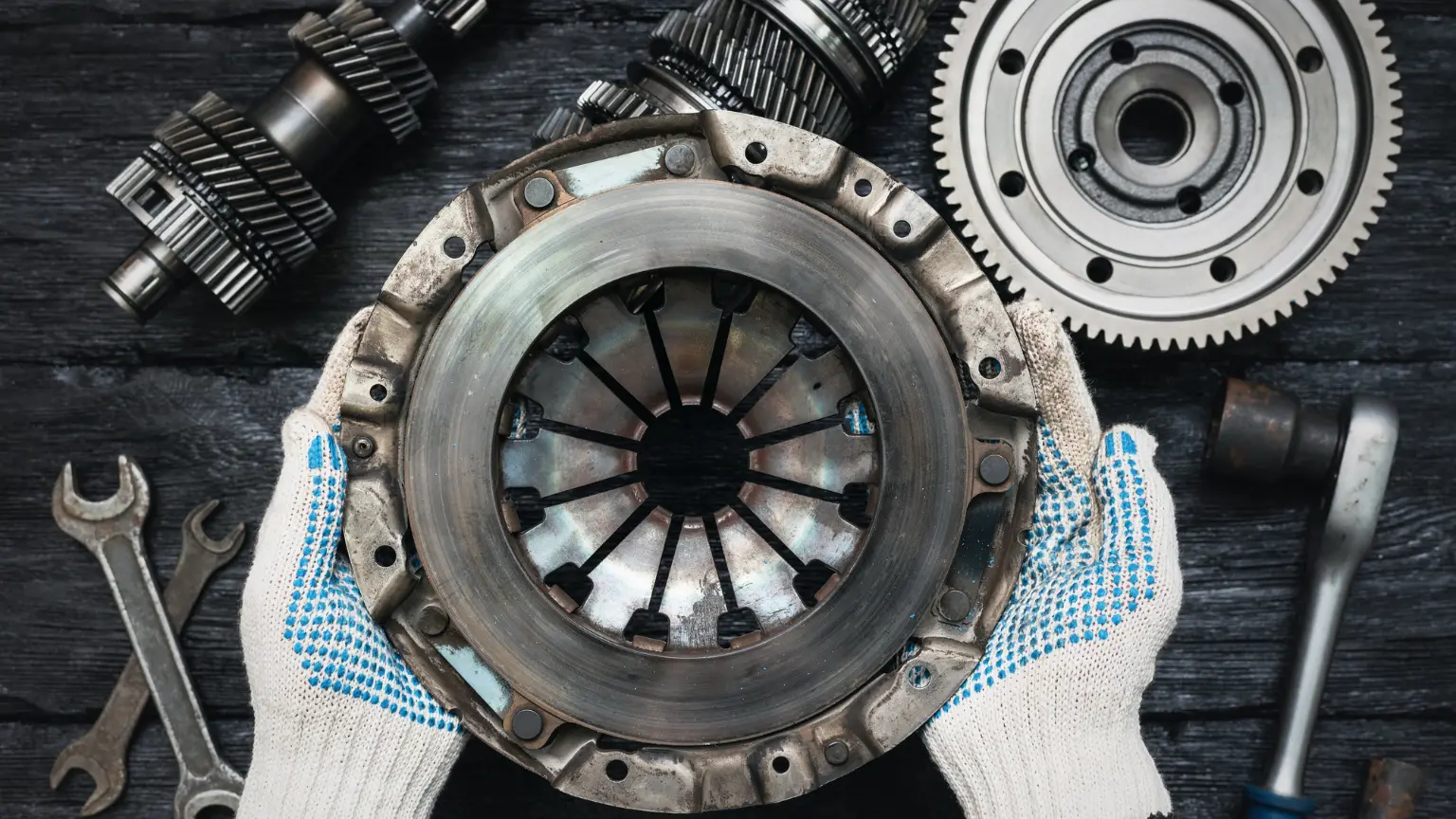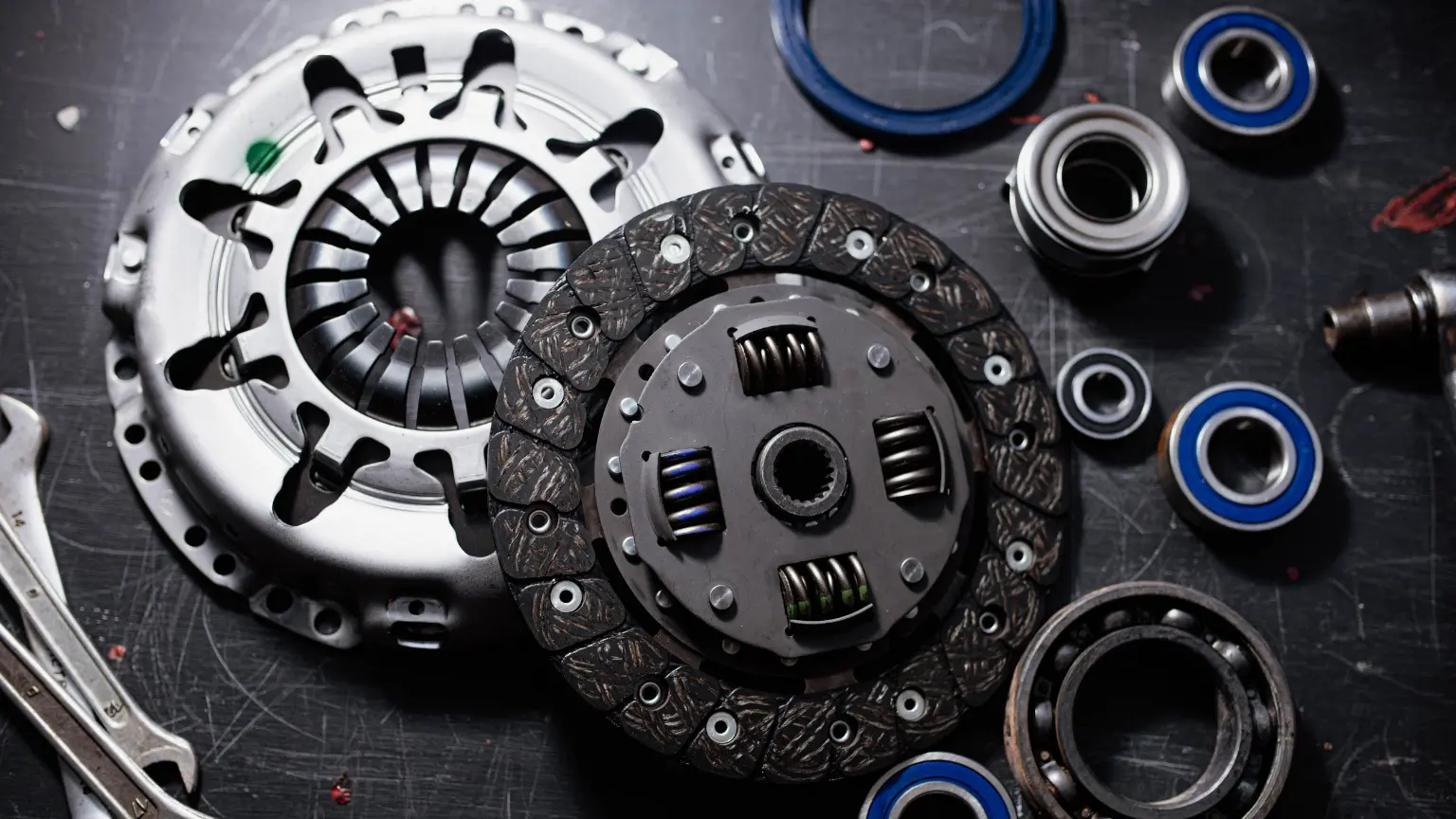Common Transmission Components: What They Are and How They Work
Explore the essential parts of manual and automatic transmissions—from clutches, gears, and shafts to torque converters, valve bodies, and sensors—that work together to deliver smooth, efficient power transfer.
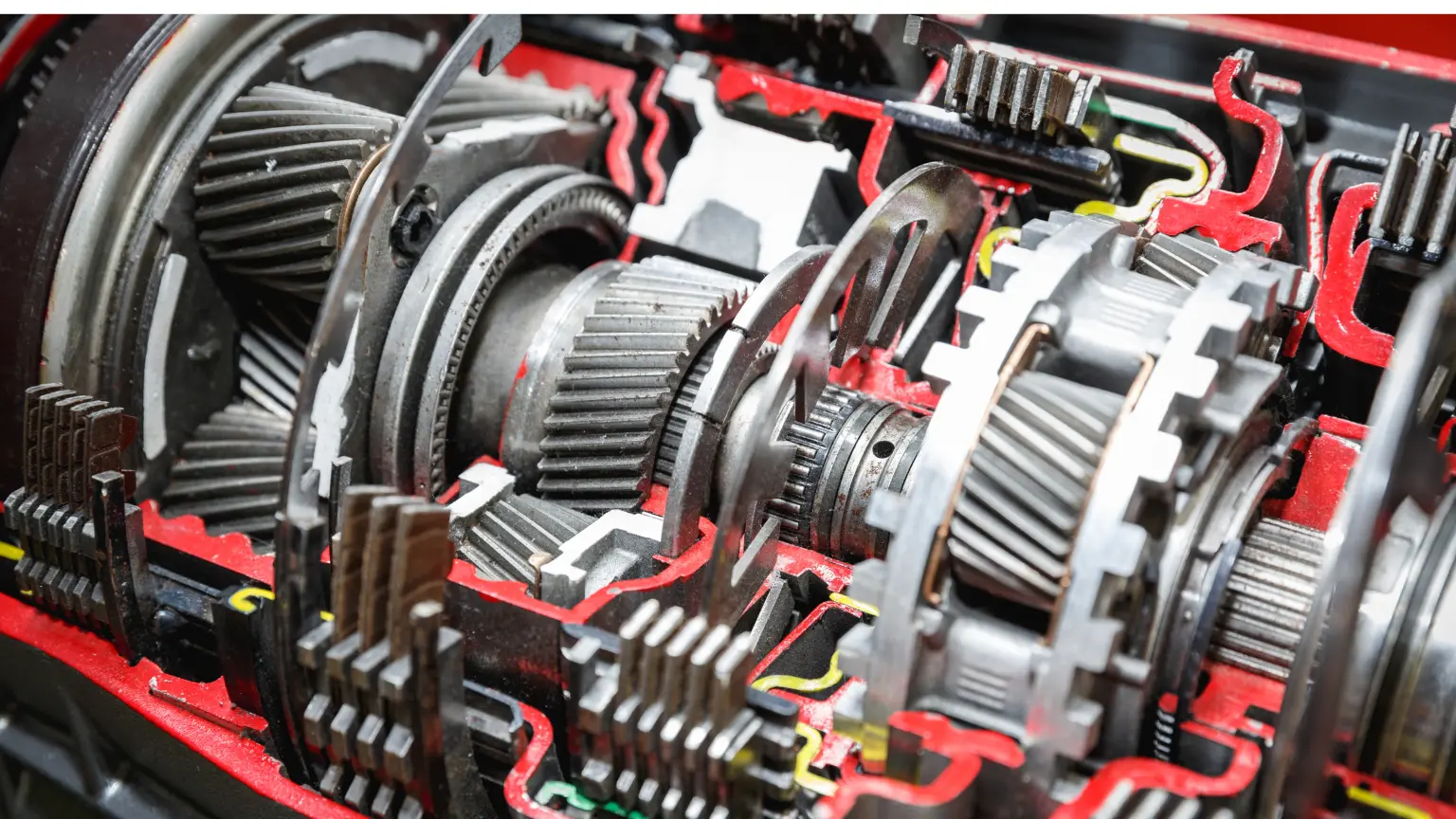
A vehicle transmission is a complex system that transfers power from the engine to the wheels, enabling the vehicle to drive at various speeds. At the heart of this system are several key components that efficiently manage power transfer. Understanding these components is crucial for anyone looking to grasp how cars operate. The main function of a transmission, whether automatic or manual, is to ensure the engine operates at an optimal speed while providing enough torque to the wheels to move and accelerate the vehicle effectively.
Core Components of Manual Transmissions
The Role of the Clutch in Power Transfer
It plays a pivotal role in manual transmission components by connecting and disconnecting the engine to the transmission. It allows the driver to engage or disengage power flow from the engine seamlessly to the transmission during gear shifts. This is essential during starts and stops, as it prevents the engine from stalling while providing the necessary torque to the wheels. The clutch assembly works through a series of springs and a pressure plate that exerts force on the clutch disc, engaging the input shaft to the engine's flywheel.
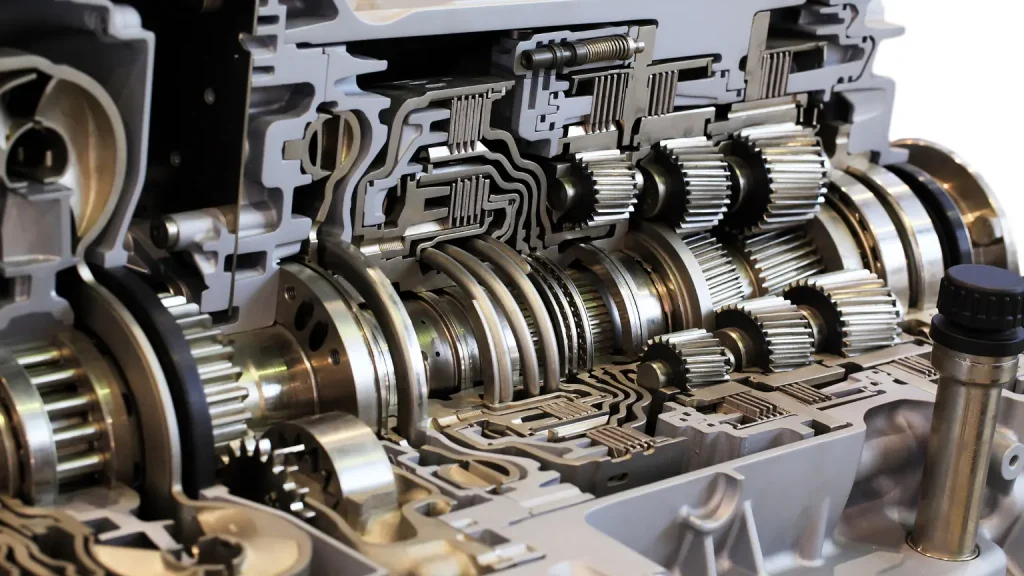
Gears, Countershafts, and Power Flow Management
In manual transmissions, gears are arranged in pairs on the main shaft and the countershaft. The countershaft is powered directly from the engine and drives the gears on the main shaft, which, in turn, rotate the output shaft. This setup allows for varying gear ratios that adjust the torque and speed sent to the wheels. The selection of different gears helps optimize the engine’s efficiency, allowing it to run at an appropriate speed while providing enough power for different driving conditions.
Input and Output Shafts
The input shaft transfers the engine’s torque to the transmission, where it is modulated before being sent through the output shaft to the drivetrain. The input shaft is directly linked to the clutch and is primarily responsible for bringing power into the transmission. Meanwhile, the output shaft carries the adjusted power out to the wheels. This arrangement is crucial for converting the engine's power into usable torque and speed that can be effectively managed and utilized during driving.
Drivetrain and Related Components
After the transmission adjusts engine power for the appropriate speed and torque, the drivetrain components take over to deliver this power to the wheels. The driveshaft, a long rotating tube, connects the transmission’s output to the differential located near the wheels. As the driveshaft spins, it transmits power to the differential, which splits and redirects torque to the axles. The axles then transfer this rotational force directly to the wheels. The differential also allows the wheels to rotate at different speeds, which is essential for smooth and controlled turning. Together, these components ensure efficient and responsive vehicle movement.
Shift Forks and Rails
Both are crucial for the smooth operation of a manual transmission. The shift forks, attached to the rails, move the synchronizers to engage different gears as directed by the driver’s use of the shift lever. This action aligns the gears into the correct position for meshing, without which gear changes would be noisy and harsh. Ensuring the alignment and engagement of gears is fundamental for a smooth driving experience and preventing damage to the transmission’s gears.
Key Components of Automatic Transmissions
The Torque Converter
This is an essential part of an automatic transmission system, acting as a fluid coupling that replaces the mechanical clutch found in manual transmissions. Its main function is to transfer rotating power from a prime mover, like an engine, to a rotating driven load. Inside the torque converter, fluid dynamics facilitate the torque transfer from the engine to the transmission without a direct mechanical connection, allowing the car to stop without stalling the engine. This component adjusts fluid flow to change torque multiplication as driving conditions vary, enhancing the vehicle’s ability to accelerate from a stop.
Planetary Gear Sets and Gear Ratios
Unlike manual transmissions, where gears are engaged and disengaged, these gear sets combine several gears in a system that includes a sun gear, planet gears, and a ring gear to produce varying gear ratios. Power flows through the transmission, including gear ratios, shifting mechanisms, and the difference between manual and automatic operation. The complex arrangement allows multiple gear ratios to coexist within a compact unit, efficiently managing the engine’s power in various driving scenarios, from slow city maneuvers to high-speed highway travel.
Valve Bodies
In automatic transmissions, the valve body is the control center, directing transmission fluid to various valves to engage the appropriate clutch pack for changing gears. The process involves a series of carefully timed hydraulic actions, which are crucial for the automatic gear shifts that drivers experience as smooth transitions:
- Fluid Reception: The valve body begins its work by receiving hydraulic fluid that is pressurized and pumped from the torque converter. This fluid acts as the lifeblood of the transmission system, enabling the hydraulic processes that facilitate gear shifts. The valve body’s design includes multiple entry points and passages that direct the fluid where it is needed most. Any blockages or malfunctions in this initial stage can lead to erratic shifting or transmission failure.
- Channel Routing: Once the fluid enters the valve body, it is routed through an intricate network of channels and passages. These pathways are designed to direct the fluid to specific valves based on the vehicle’s operating conditions, such as speed, engine load, and throttle position. This precise routing ensures the correct clutch packs and bands are engaged for the desired gear. If the routing is disrupted due to wear or contamination, the vehicle may experience delayed or harsh shifts. The engineering behind these channels ensures that fluid distribution is both rapid and accurate, even under demanding driving conditions.
- Clutch Activation: The valve body activates the clutches and bands within the transmission system. These components engage or disengage to switch gears, a process controlled by the flow of hydraulic fluid. By opening and closing the appropriate valves, the valve body ensures that the correct gear is engaged based on driving needs. Malfunctions in this stage can result in gear slippage, loss of power, or failure to shift altogether. Precisely timing and execution of clutch activation are critical for maintaining a smooth driving experience, especially in automatic transmissions where drivers expect seamless performance.
- Pressure Adjustment: One of the valve body’s most critical functions is modulating hydraulic pressure to ensure gear shifts are not only timely but also smooth. High pressure ensures firm engagement, while lower pressure prevents harsh or jarring shifts. The valve body achieves this balance through a series of spring-loaded valves and solenoids that adjust the fluid pressure dynamically. When this process is disrupted, the driver may notice symptoms such as delayed shifting or a "clunking" sensation during gear changes.
- Return Cycle: After a gear shift is completed, the valve body directs the hydraulic fluid back to the torque converter or reservoir, allowing it to be reused in the next cycle. This return process ensures that the system remains efficient and maintains the fluid’s temperature and pressure balance. If the return cycle is hindered, it can lead to overheating or fluid degradation, negatively impacting transmission performance. The return mechanism showcases the valve body’s role in sustaining the continuous cycle of fluid movement within the transmission.
The valve body’s role in directing hydraulic fluid for shifting is vital for the smooth operation of automatic transmissions. By managing fluid reception, routing, pressure adjustment, and the return cycle, it ensures precise and efficient gear changes.
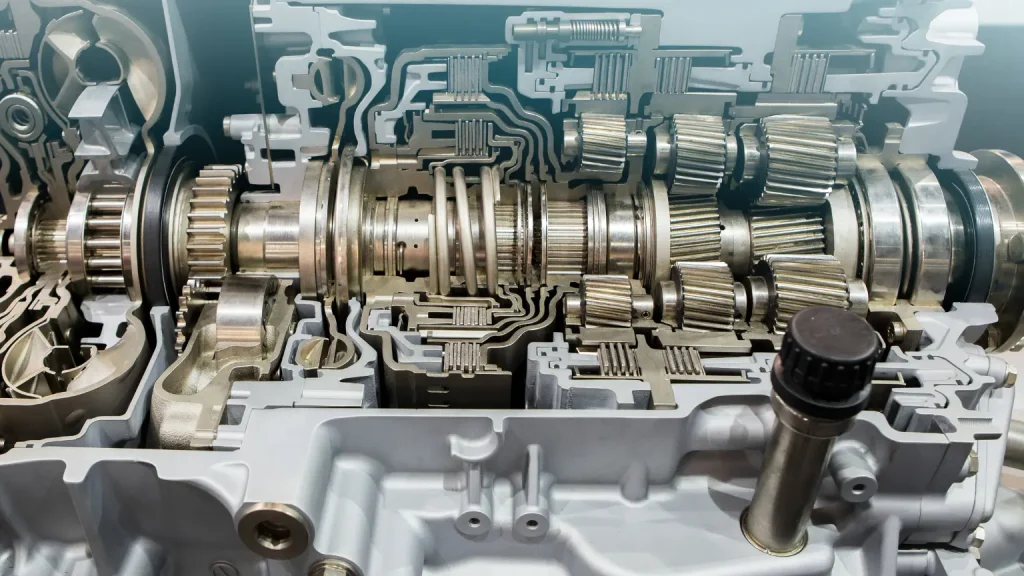
The Transmission Cooler
By keeping the fluid cool, transmission coolers help maintain the transmission's efficiency and prolong its life. These coolers typically allow the hot fluid to flow through cooled coils, dissipating heat before it can damage internal components. This process is crucial during extended driving periods or under heavy loads, where the risk of overheating is significant. Effective cooling ensures that the automatic transmission fluid performs optimally as both a lubricant and a hydraulic medium, which is critical for the smooth operation of automatic transmissions.
Common Transmission Problems
Transmission failures are among the most serious issues a vehicle can face, often signaled by a range of symptoms that drivers should not ignore. Typical problems include slipping gears, rough or delayed shifting, burning smells, leaking transmission fluid, and unusual noises such as clunking, whining, or grinding. These symptoms can stem from various causes, such as worn clutch plates, damaged or misaligned gears, low or contaminated transmission fluid, or faulty seals and gaskets. In automatic transmissions, issues with the valve body or torque converter can also lead to erratic shifting or loss of power. If left unaddressed, these failures can escalate rapidly. Minor leaks can deplete fluid levels, leading to overheating and severe internal damage, while persistent slipping or rough shifting may result in complete transmission breakdown. The consequences of neglecting transmission repairs are significant: not only can they lead to costly replacements or rebuilds, but they also pose safety risks, such as unexpected loss of acceleration or the inability to shift gears properly. Ignoring early warning signs can turn a manageable repair into a major expense and potentially leave the vehicle inoperable, highlighting the importance of prompt diagnosis and professional service.
Shared Transmission Parts in Manual and Automatic Systems
The importance of transmission fluids, seals, gaskets, and hydraulic systems in maintaining transmission function and preventing wear.
Gearbox Housing
Constructed typically from high-strength metals, it shields the intricate arrangement of gears, shafts, and transmission fluid from external contaminants and physical damage. This housing also plays a crucial role in maintaining the alignment and spacing of the transmission's internal parts, ensuring they operate smoothly and efficiently. By doing so, it significantly contributes to the overall durability and reliability of the vehicle's transmission system.
The Role of Transmission Fluid in Both Systems
In manual systems, it primarily reduces friction and wear between the moving parts, extending their lifespan. In automatic systems, lubrication is crucial; it also functions in power transmission, facilitating smooth, precise gear shifts by transferring hydraulic pressure. Regular maintenance and timely replacement of transmission fluid are critical to prevent mechanical breakdowns and ensure the transmission operates at peak efficiency.
Bearings and Seals
Bearings reduce friction between the rotating parts, allowing them to move smoothly at high speeds without excessive wear. Seals prevent the leakage of fluid, ensuring that the internal components remain well-lubricated and free from contaminants. Together, these components help sustain the transmission's performance and prevent failures by creating a controlled environment where mechanical parts can operate under optimal conditions.
Sensors and Electronics in Modern Transmissions
Modern transmissions increasingly rely on sophisticated sensors and electronic systems to enhance efficiency and responsiveness. These technologies perform several critical functions:
- Monitoring Performance: Sensors are at the heart of vehicle transmission systems, continuously monitoring critical parameters such as speed, torque, temperature, and pressure. These sensors collect real-time data that allows the transmission to adapt to changing conditions, such as sudden accelerations or steep inclines. For instance, speed sensors measure wheel rotation to determine the optimal time for a gear shift, while torque sensors assess the force applied to ensure smooth power delivery. Without accurate monitoring, the transmission would struggle to maintain performance, potentially leading to issues like gear slippage or overheating.
- Adjusting Operations: The data gathered by sensors is relayed to the vehicle’s electronic control unit (ECU), which processes the information and makes instantaneous adjustments to the transmission’s operation. This includes selecting the appropriate gear, modulating fluid pressure, and ensuring power is distributed efficiently to the wheels. These adjustments are particularly important in vehicles with advanced transmission systems, such as continuously variable transmissions (CVTs) or dual-clutch transmissions (DCTs), where precision is key to performance. If the sensors or ECUs malfunction, the vehicle may exhibit erratic shifting, delayed responses, or even enter "limp mode," where it operates at reduced functionality to prevent further damage.
- Improving Fuel Efficiency: By analyzing real-time data, these systems ensure the engine and transmission work harmoniously to operate at the most efficient load and speed. The transmission can shift gears earlier or maintain a specific gear longer to reduce fuel consumption during highway driving. This optimization not only saves fuel but also reduces emissions, aligning with stricter environmental standards. Keeping the sensors and ECUs in good condition through regular servicing can help maintain this fuel-saving benefit over the vehicle’s lifespan.
- Enhancing Safety: Advanced electronic transmission systems also play a vital role in vehicle safety. They integrate seamlessly with safety features like traction control, anti-lock braking systems (ABS), and hill-start assist. For instance, when traction control detects wheel slippage, the transmission adjusts power delivery to stabilize the vehicle. Similarly, hill-start assist ensures the transmission holds the vehicle in place on inclines, preventing rollback. These features rely on precise sensor data to function effectively, underscoring the importance of well-maintained electronic systems. Any issues with these components could compromise safety and should be addressed promptly.
By continuously monitoring and adjusting operations, these systems ensure that vehicles respond seamlessly to driver inputs and road conditions. Recommended maintenance practices, such as fluid changes and inspections, as well as common troubleshooting steps for transmission issues, are crucial.
Finding the Right Transmission Repair Shop
Selecting a Reliable Repair Service
Look for shops that specialize in transmission work rather than general automotive repair. Specialists often have more in-depth knowledge and experience with transmission systems, both manual and automatic. It’s important to check reviews and testimonials from previous customers to measure the reliability and quality of the service. Seeking recommendations from friends or family who have had similar work done can lead you to trustworthy professionals. There are options for enhancing or customizing transmission systems for improved performance or specific vehicle needs.
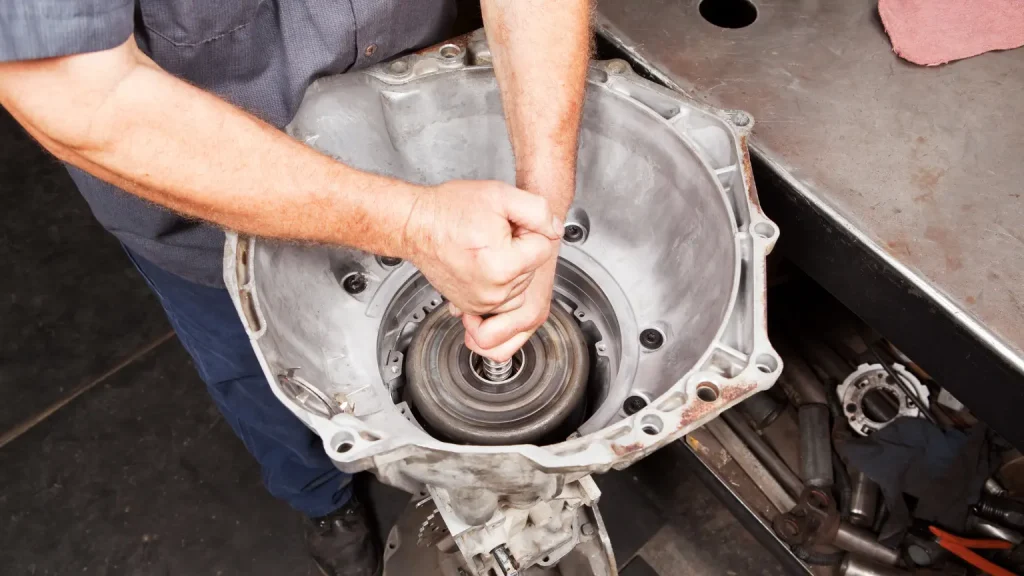
What to Expect During a Repair
Understanding what happens during a transmission repair can help you communicate more effectively with technicians and ensure quality service. A comprehensive repair usually begins with a diagnostic test to identify the specific issues or internal mechanical problems. After diagnosing the problem, the technician should provide a detailed explanation of the necessary repairs, including an estimated cost and timeline. Transparency during this process is key to building trust between the vehicle owner and the repair service.
Different types of transmission components are integral to the overall performance and efficiency of a vehicle. They ensure that the engine's power is effectively transferred and appropriately modified to meet the demands of various driving conditions. Whether it involves the smooth operation of gears in a manual system or the fluid dynamics of an automatic, these components must function flawlessly to deliver a responsive, fuel-efficient driving experience. Regular maintenance of these parts, especially critical elements like the clutch and torque converter function, is essential to prevent mechanical failures and extend the vehicle’s operational lifespan. For expert diagnostics, repairs, and reliable service, schedule your transmission appointment today at Trans Medic Transmissions.
Follow a maintenance program
Ante gravida id aenean quis egestas risus nam amet nullam leo diam diam aliquam eu eu malesuada arcu rhoncus suspendisse nulla mattis ut amet sagittis in justo egestas.

search for a trusted mechanic
Lorem ipsum dolor sit amet, consectetur adipiscing elit lobortis arcu enim urna adipiscing praesent velit viverra sit semper lorem eu cursus vel hendrerit elementum morbi curabitur etiam nibh justo, lorem aliquet donec sed sit mi dignissim at ante massa mattis.
- Neque sodales ut etiam sit amet nisl purus non tellus orci ac auctor
- Adipiscing elit ut aliquam purus sit amet viverra suspendisse potent
- Mauris commodo quis imperdiet massa tincidunt nunc pulvinar
- Excepteur sint occaecat cupidatat non proident sunt in culpa qui officia
Check the air pressure in your tires
Vitae congue eu consequat ac felis placerat vestibulum lectus mauris ultrices cursus sit amet dictum sit amet justo donec enim diam porttitor lacus luctus accumsan tortor posuere praesent tristique magna sit amet purus gravida quis blandit turpis.
Review your suspension frequently
At risus viverra adipiscing at in tellus integer feugiat nisl pretium fusce id velit ut tortor sagittis orci a scelerisque purus semper eget at lectus urna duis convallis. porta nibh venenatis cras sed felis eget neque laoreet suspendisse interdum consectetur libero id faucibus nisl donec pretium vulputate sapien nec sagittis aliquam nunc lobortis mattis aliquam faucibus purus in.
- Neque sodales ut etiam sit amet nisl purus non tellus orci ac auctor
- Adipiscing elit ut aliquam purus sit amet viverra suspendisse potent
- Mauris commodo quis imperdiet massa tincidunt nunc pulvinar
- Excepteur sint occaecat cupidatat non proident sunt in culpa qui officia
Service your vehicle as regularly as posible
At risus viverra adipiscing at in tellus integer feugiat nisl pretium fusce id velit ut tortor sagittis orci a scelerisque purus semper eget at lectus urna duis convallis. porta nibh venenatis cras sed felis eget neque laoreet suspendisse interdum consectetur libero id faucibus nisl donec pretium vulputate sapien nec sagittis aliquam nunc lobortis mattis aliquam faucibus purus in.
“Nisi quis eleifend quam adipiscing vitae aliquet bibendum enim facilisis gravida neque velit euismod in pellentesque”
Conclusion
Eget lorem dolor sed viverra ipsum nunc aliquet bibendum felis donec et odio pellentesque diam volutpat commodo sed egestas aliquam sem fringilla ut morbi tincidunt augue interdum velit euismod eu tincidunt tortor aliquam nulla facilisi aenean sed adipiscing diam donec adipiscing ut lectus arcu bibendum at varius vel pharetra nibh venenatis cras sed felis eget.

